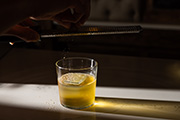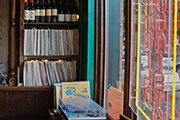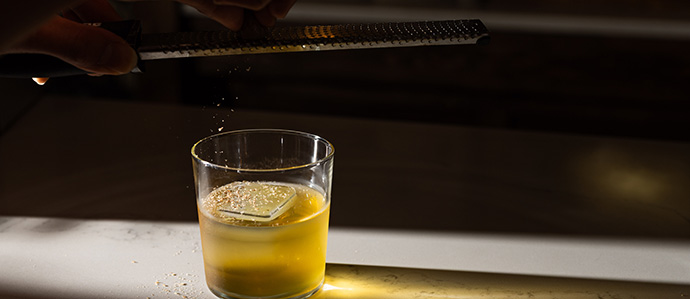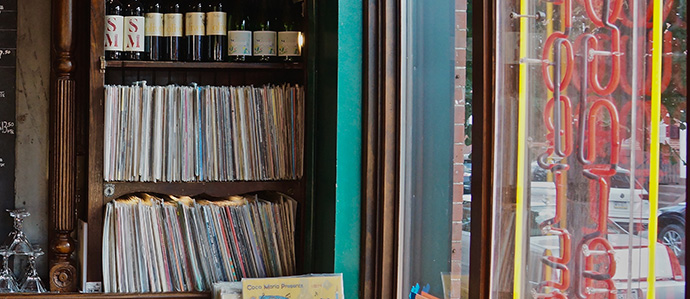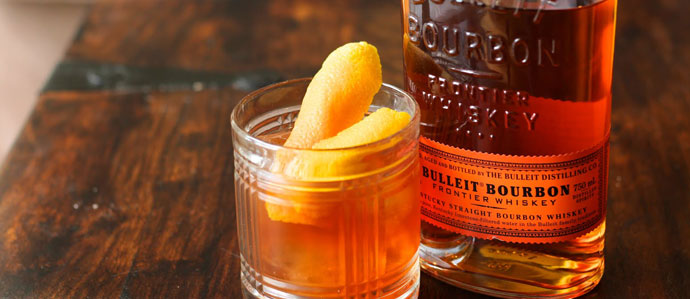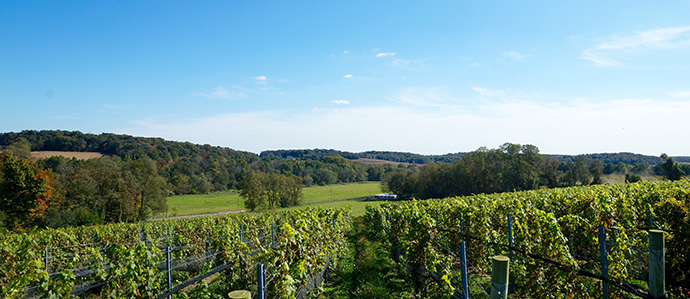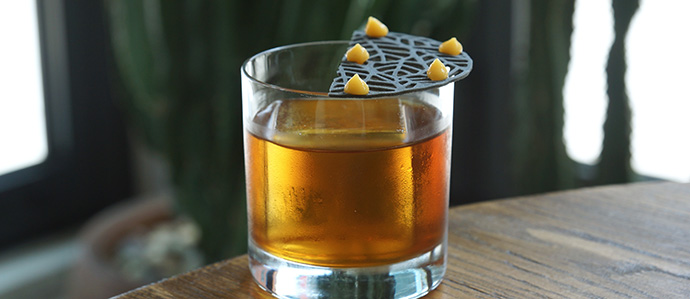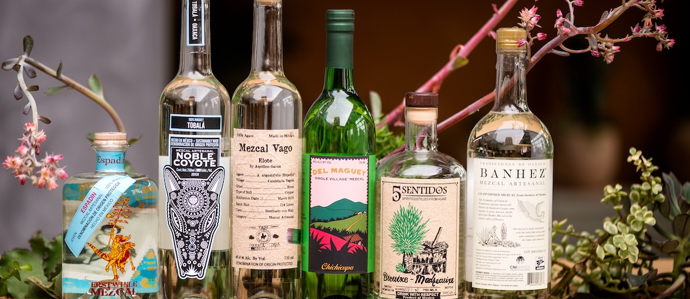Everything You Ever Wanted to Know About Gin*
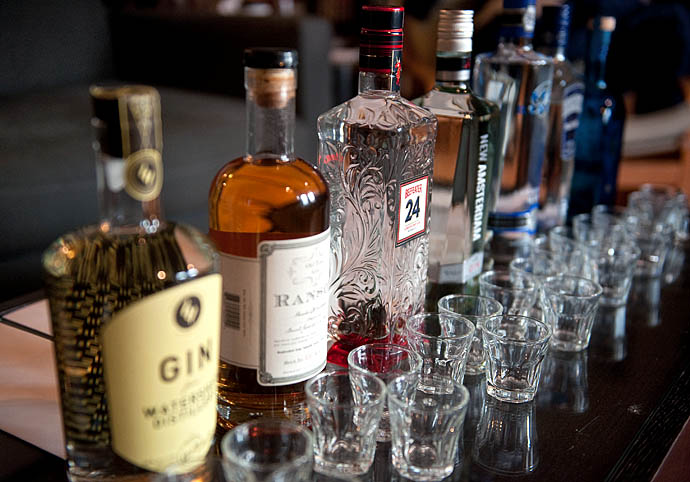
Ah, gin. You either love it or you hate it. This spirit often gets a bad rap because of its intense juniper flavor. However, thanks to the classic cocktail boom of the past decade, gin has made an huge resurgence, opening up the market to a wide variety of craft distilled products with an incredible range of flavor. There really is a gin for everyone these days, and no excuse not to at least try a few different types to find one you like.
History
.jpg) The exact origin of gin is debated, but most agree it can be traced back to early 17th Century Holland, where Dr. Franciscus Sylvius is generally credited with its invention as a medicinal tonic to be used in the treatment of kidney disorders. He added juniper berries – prized as natural diuretics – to malt wine and grain alcohol. This concoction became known as genever, coming either from the French word genièvre or the Dutch jenever (both of which mean juniper), and that spirit is still popular in the Netherlands today.
The exact origin of gin is debated, but most agree it can be traced back to early 17th Century Holland, where Dr. Franciscus Sylvius is generally credited with its invention as a medicinal tonic to be used in the treatment of kidney disorders. He added juniper berries – prized as natural diuretics – to malt wine and grain alcohol. This concoction became known as genever, coming either from the French word genièvre or the Dutch jenever (both of which mean juniper), and that spirit is still popular in the Netherlands today.
Genever eventually evolved into modern day dry gin after British soldiers drank it before entering the battlefields while fighting in mainland Europe, and took such a liking to it that they brought it back to England with them. It became even more popular when a Dutchman, William the Orange, occupied the British throne after the Glorious Revolution in the late 17th Century.
Gin quickly became all the rage in Britain, being inexpensive to produce and easy to drink. As English distillers began to use continuous column stills in the 18th Century, they could more easily control the distillation process and a better quality spirit could be produced. In this way, back-alley gin evolved into what is known today as London Dry gin, the world’s most popular style.
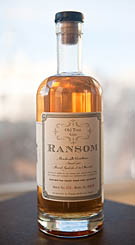 As time passed, gin made its way all over the world, including America, where yet another variety was created in the mid 19th Century, known as Old Tom gin. This style is a sweeter version of London Dry – though still drier than genever – and it all but disappeared after Prohibition, along with other strong flavored spirits, as they fell out of favor for nearly half a century until the current classic cocktail revival brought them back.
As time passed, gin made its way all over the world, including America, where yet another variety was created in the mid 19th Century, known as Old Tom gin. This style is a sweeter version of London Dry – though still drier than genever – and it all but disappeared after Prohibition, along with other strong flavored spirits, as they fell out of favor for nearly half a century until the current classic cocktail revival brought them back.
Modern Day
Which brings us to today, where we find a plethora of gin options at the liquor store. You can now purchase gins representing many different styles, such as the original genever, classic London Dry, Plymouth style (which is a type of English gin, but less dry than the London), Old Tom and a newer entrant into the gin world: American Dry style, which is a somewhat ambiguous but unique classification for American gins.
Most have probably tried Tanqueray or Bombay Sapphire in a gin and tonic, and while these are solid options, there are plenty of others to try. Below are a few favorites, in three different price ranges, to help broaden your gin experience. Do you love a gin we haven’t included? Let us know in the comments.
Below $20
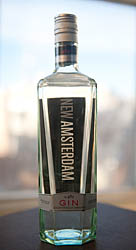 New Amsterdam Gin, 80 proof ($10–$16)
New Amsterdam Gin, 80 proof ($10–$16)
This is a smooth, fruity gin that is low on juniper and has subtle lemon and grapefruit flavors. It’s surprisingly drinkable for a cheaper gin and has very little bite. It makes a great base spirit for more complex cocktails.
$20-$30
Plymouth English Gin, 82.4 proof ($27–$30)
A bit sweeter than traditional London Dry, this gin has a bit of a juniper bite up front, but finishes smooth and is easy to drink. It also has a spicy flavor from cardamom and coriander, which is tempered by lemon and orange notes. This is a great gin for a spirit-forward drinks like a martini or a gimlet.
Honorable mention:
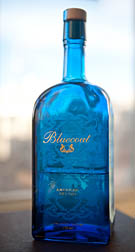 Bluecoat American Dry Gin, 94 proof ($23–$29)
Bluecoat American Dry Gin, 94 proof ($23–$29)
Made in Philadelphia in the old-fashioned manner using a copper pot still, this spirit is a great example of an American Dry style gin. It starts sweet, with notes of juniper and citrus and finishes warm and a bit dry, with added bitterness from several other botanicals. This is an excellent contemporary gin, and while it mixes well in older cocktail recipes, it’s a gin that inspires home experimenting, especially with citrus flavors or liqueurs.
Above $30
Ransom Old Tom Gin, 88 proof ($33–$43)
The result of a collaboration between Ransom and David Wondrich, the James Beard award winning cocktail historian, this gin is intended to be a historically accurate replica of an Old Tom style from the pre-Prohibition days. It’s one of the few kinds of gin that is distilled with a mix of whiskey wort (the liquid that is extracted from the mashing process of whiskey) and 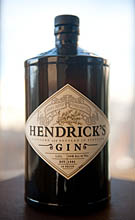 botanicals and then is aged for three to six months in an oak barrel. This gives the gin a rich caramel aroma and strong, bourbon-like flavors of vanilla and brown sugar. A wonderful sipping gin, it would also be excellent in any classic pre-Prohibition cocktail, such as the Martinez.
botanicals and then is aged for three to six months in an oak barrel. This gives the gin a rich caramel aroma and strong, bourbon-like flavors of vanilla and brown sugar. A wonderful sipping gin, it would also be excellent in any classic pre-Prohibition cocktail, such as the Martinez.
Honorable mention:
Hendrick's Gin, 88 proof ($31-$42)
Floral and complex, this gin tastes strongly of roses, with lovely lemon and cucumber undertones. It’s extremely approachable and is a great choice for those who prefer little or even undetectable juniper in their gin. The unique flavor also lends itself well for creating your own contemporary cocktails using interesting, complementary ingredients.
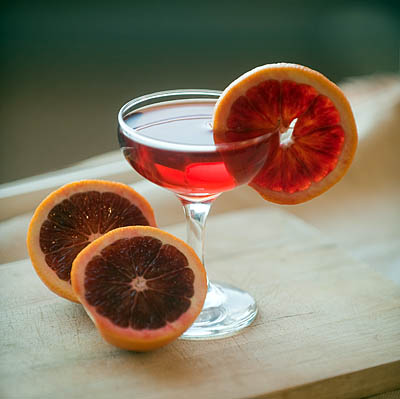 Recipe
Recipe
Now that you have a new bottle of gin, here’s a great classic cocktail to showcase it in:
Negroni
1 oz. gin
1 oz. sweet vermouth
1 oz. Campari
Stir all three ingredients vigorously in a shaker or mixing glass. Strain into a coupe and garnish with an orange wheel. Voila!
All photos by Jen Killius, Home Speakeasy







